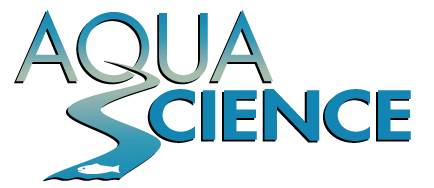Environmental Toxicology Specialists
AQUA-Science, located in Davis, CA, was established in 1985 and provides aquatic toxicity testing services, TRE/TIE and research testing and consulting, and aquatic testing equipment.
Aquatic Toxicity Testing
AQUA-Science is ELAP-certified to conduct toxicity tests using a variety of freshwater, estuarine and marine organisms.
During the last 35+ years, we have completed well over 8,000 toxicity tests for numerous clients in California and the US, in support for:
NPDES Compliance Testing
Stormwater Monitoring
Agricultural Discharge
Groundwater Monitoring
Industry discharges
The staff of aquatic toxicologists has over 50 years of combined experience in conducting aquatic bioassays.
In addition, AQUA-Science has been instrumental in developing and publishing new test methods and procedures in many areas of aquatic toxicology. AQUA-Science has over 3,000 ft2 of laboratory facilities for conducting bioassays and TIE studies, and is available 7 days a week to respond to client needs.
- Water flea (Ceriodaphnia dubia)
- Fathead minnow (Pimephales promelas)
- Rainbow trout (Onchorhynchus mykiss)
- Mysid shrimp (Americamysis bahia)
- Inland silverside (Menidia beryllina)
- Amphipod crustacean (Hyalella azteca)
- Water flea (Ceriodaphnia dubia)
- Fathead minnow (Pimephales promelas)
- Green algae (Selenastrum capricornutum)
- Mysid shrimp (Americamysis bahia)
- Inland silverside (Menidia beryllina)
- Red abalone (Haliotis rufescens)
- Topsmelt (Atherinops affinis)
- Giant kelp (Macrocystis pyrifera)
- Thalassiosira sp
TRE/TIE and Research
AQUA-Science has extensive experience in the conduct of Phase I, Phase II, and Phase III TIE procedures to identify the cause(s) of toxicity in many types of aqueous matrices including municipal effluent, industrial and refinery effluent, landfill leachate, surface waters, and stormwater.
AQUA-Science is nationally recognized as having extensive experience in conducting cost effective and state-of-the-art TRE/TIEs, and for development of novel, cutting edge TIE procedures for identification of the chemical causes of toxicity with freshwater, estuarine, and marine test organisms. Examples of these new procedures include Phase I and II TIE methods for organophosphate and pyrethroid insecticides, use of antibody and enzymatic procedures for identification of non-polar organic toxicity, and for development of TIE procedures for algae and phytoplankton.
Many of the TIEs have been published in peer-reviewed scientific journals.
Team
Cecilia Walker, B.S.
Laboratory Director
Ms. Walker has been employed by AQUA-Science for 20 years, and serves as the Operations Manager. In this capacity, Cecilia supervises the conduct of all studies, including data collection, statistical analysis, and preparation draft reports. She also participates in study design and client contact. Since Cecilia previously served as Laboratory Manager for over 7 years, she is very familiar with the day-to-day operations of the laboratory. She has conducted and/or supervised over 4000 bioassays with municipal and industrial effluents, storm water and surface waters using a wide variety of freshwater, estuarine and marine test organisms. She has conducted numerous TIEs with Ceriodaphnia, larval fathead minnows, rainbow trout, algae, abalone and Thalassiosira.
Lindsey Freeman, B.S.
Laboratory Supervisor
Ms. Freeman has served as Laboratory Technician at AQUA-Science for over 3 years, during which time she has gained considerable experience in culture and testing procedures for variety of freshwater, estuarine and marine organisms, including Ceriodaphnia, juvenile and larval fathead minnows, green algae, rainbow trout, Menidia, mysids, abalone, echinoderms and Thalassiosira. Lindsey has also conducted Phase I and Phase II TIE studies on municipal effluent, storm water and surface waters using a variety of test organisms.
Sydney Berrios
Senior Laboratory Technician
Kerill Moseychuk
Laboratory Technician
Luis Farrach
Laboratory Technician
Mia Womack
Laboratory Technician
